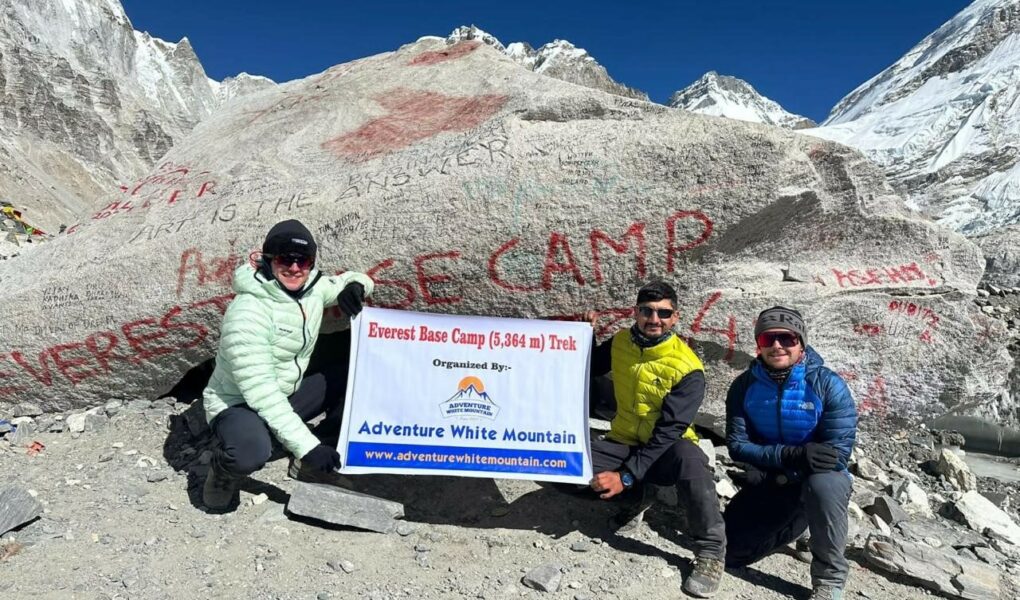Everest Base Camp Trek: A Journey of a Lifetime
The Everest Base Camp Trek is one of the most iconic and sought-after trekking adventures in the world. Nestled in the heart of the Himalayas, this trek offers an unparalleled experience of the majestic beauty of Mount Everest, the world’s highest peak. The journey to Everest Base Camp is not just a physical challenge but also a spiritual journey, providing trekkers with a deep connection to nature, local culture, and themselves.
The Route
The classic route to Everest Base Camp begins with a thrilling flight from Kathmandu to Lukla, one of the most dangerous airports in the world due to its short runway and high altitude. From Lukla, trekkers embark on an 8-14 day journey through diverse landscapes, ranging from lush forests and river valleys to arid high-altitude deserts. The trek passes through several Sherpa villages, including Namche Bazaar, the gateway to the Everest region, where trekkers can acclimatize and experience the rich Sherpa culture.
Highlights of the Trek
- Namche Bazaar: This vibrant Sherpa town is the gateway to the high Himalayas. It’s a bustling market where trekkers can acclimatize while exploring local shops, bakeries, and traditional Tibetan markets.
- Tengboche Monastery: One of the most famous monasteries in Nepal, Tengboche offers panoramic views of Everest, Ama Dablam, and other peaks. The spiritual atmosphere here is palpable, making it a significant highlight of the trek.
- Khumjung Village: Known as the “Hidden Valley,” Khumjung is home to the Hillary School and a monastery that claims to have a Yeti scalp. It provides a glimpse into traditional Sherpa life.
- Gorak Shep: The final stop before Everest Base Camp, Gorak Shep is a small settlement situated at a high altitude. From here, trekkers can hike to Kala Patthar, a viewpoint offering spectacular sunrise views of Everest.
- Everest Base Camp: Reaching Base Camp is a moment of triumph for trekkers. While the views from Base Camp itself are limited due to the surrounding peaks, the sense of achievement and the close proximity to Everest are incredibly rewarding.
Challenges and Preparation
The trek to Everest Base Camp is demanding, requiring good physical fitness and mental resilience. Altitude sickness is a significant concern, and acclimatization days are crucial. Trekkers should be prepared for long days of hiking in varying weather conditions, from warm sunny days to freezing nights.
Proper gear, including layered clothing, sturdy hiking boots, and a good sleeping bag, is essential. It’s also important to stay hydrated, eat well, and listen to your body to avoid altitude-related issues.
Everest Base Camp Helicopter Tour: A Bird’s Eye View
For those who dream of experiencing Everest without the physical demands of a trek, the Everest Base Camp Helicopter Tour is an ideal alternative. This tour offers a quick, luxurious, and breathtaking way to witness the grandeur of the Himalayas from the sky.
The Experience
The helicopter tour starts with a flight from Kathmandu to Lukla, followed by a scenic flight over the Khumbu region. Passengers can enjoy aerial views of famous landmarks such as Namche Bazaar, Tengboche Monastery, and the Khumbu Glacier. The helicopter then lands at Everest Base Camp or Kala Patthar, providing a unique opportunity to stand at the foot of the world’s highest peak.

Highlights
- Panoramic Views: The helicopter tour offers unparalleled views of the Himalayan range, including Everest, Lhotse, Nuptse, and Ama Dablam. The aerial perspective provides a comprehensive understanding of the region’s geography.
- Quick and Comfortable: Unlike the trek, which takes weeks, the helicopter tour can be completed in a single day. It’s perfect for those with limited time or physical constraints.
- Luxurious Experience: The helicopter ride is a comfortable and exclusive way to experience the Himalayas. Many tours include breakfast at a high-altitude hotel, adding a touch of luxury to the adventure.
Considerations
While the helicopter tour is an incredible experience, it comes with its own set of challenges. Weather conditions can affect flight schedules, and the high altitude can still pose risks, although the short duration minimizes these. It’s also a more expensive option compared to trekking.
Everest Base Camp Trek Return with Helicopter: The Best of Both Worlds
Combining the adventure of trekking with the luxury of a helicopter ride, the Everest Base Camp Trek Return with Helicopter option offers the best of both worlds. Trekkers can enjoy the immersive experience of hiking to Everest Base Camp and then return to Kathmandu in style, bypassing the return trek.
The Journey
This hybrid adventure starts with the traditional trek from Lukla to Everest Base Camp. Trekkers follow the same route, experiencing the beauty, culture, and challenges of the Himalayas. After reaching Base Camp and spending time at Kala Patthar, instead of retracing their steps, trekkers take a helicopter ride back to Lukla or directly to Kathmandu.
Highlights
- Complete Experience: Trekkers get the full trekking experience, including acclimatization, cultural immersion, and physical challenge, while also enjoying the convenience of a helicopter return.
- Time-Saving: The helicopter return saves several days, making the overall trip shorter. This is ideal for those who want to experience Everest but have limited time.
- Scenic Return: The return helicopter ride provides stunning aerial views of the trek route, allowing trekkers to appreciate the landscape from a different perspective.
Practical Considerations
This option is more expensive than a standard trek due to the cost of the helicopter ride. Weather conditions can also impact the helicopter schedule, so flexibility is necessary. However, the combination of adventure and luxury makes it a popular choice for many trekkers.
Manaslu Circuit Trek: An Off-the-Beaten-Path Adventure
The Manaslu Circuit Trek is a remote and less-traveled alternative to the popular Everest and Annapurna treks. It circumnavigates Mount Manaslu, the eighth highest peak in the world, offering a rugged and authentic Himalayan experience.
The Route
The trek begins in the town of Soti Khola and follows the Budhi Gandaki River through lush forests, terraced fields, and traditional Gurung villages. Key stops include Machha Khola, Jagat, Deng, Namrung, Samagaon, and Samdo. The high point of the trek is the crossing of the Larkya La Pass at 5,160 meters, before descending to Dharapani and eventually returning to Kathmandu.
Highlights
- Cultural Immersion: The Manaslu region is home to diverse ethnic communities, including the Gurung and Tibetan people. Trekkers can experience their unique cultures, traditions, and hospitality.
- Scenic Beauty: The trek offers stunning views of Mount Manaslu, Himlung Himal, Cheo Himal, and other peaks. The landscape varies from subtropical forests to alpine meadows and glacial valleys.
- Larkya La Pass: Crossing this high pass is a challenging and rewarding experience, offering breathtaking panoramic views of the surrounding mountains.
- Remote and Untouched: The Manaslu Circuit is less crowded than other popular treks, providing a sense of solitude and connection with nature. The trails are pristine, and the villages retain their traditional charm.
Challenges and Preparation
The Manaslu Circuit Trek is demanding, requiring good physical fitness and acclimatization to high altitudes. Trekkers must be prepared for long days of hiking and varying weather conditions. Proper gear, including warm clothing and sturdy boots, is essential.
Since the trek is in a remote area, logistical support is crucial. Trekkers need to arrange permits and possibly hire a guide or join an organized tour for safety and ease of navigation.
Conclusion
The Himalayas offer a range of trekking adventures, each with its unique charm and challenges. Whether it’s the iconic Everest Base Camp Trek, the luxurious Everest Base Camp Helicopter Tour, the hybrid Everest Base Camp Trek Return with Helicopter, or the remote Manaslu Circuit Trek, each journey promises unforgettable experiences and breathtaking landscapes.
Choosing the right trek depends on your physical fitness, time availability, budget, and personal preferences. Whichever path you choose, the Himalayas will leave an indelible mark on your heart, offering a sense of achievement and a deep connection to the natural world.




